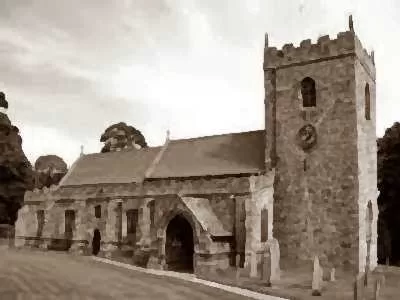Unraveling the Dark Secrets Behind Lancashire’s Most Notorious Witch!
In the annals of witchcraft history, few stories are as compelling and tragic as that of Jennet Preston, a woman whose life and death were steeped in the superstitions and societal norms of the seventeenth century. Although she is often associated with the infamous Lancashire witches, Jennet’s roots trace back to Yorkshire, specifically Gisburn, which was part of Yorkshire during her lifetime.
This article delves into her life, the accusations against her, and the societal dynamics that led to her tragic fate.
Glimpse into Jennet’s Life
Jennet Preston was born Jennet Balderston and married William Preston on May 10, 1587. By the time the witch trials unfolded, she was in her mid-forties. The Register of Gisburn Parish Church documents her marriage, providing a glimpse into her life before the storm of accusations began.
Her story is primarily chronicled by Henry Potts in his work, Wonderfull Discoverie, where he describes her as a woman who was welcomed into the home of Thomas Lister of Westby Hall. Potts notes that she had “free access, kind respect and entertainment” in Lister’s household, a testament to her standing in the community. However, the tides of fortune would soon turn against her.
The Accusations Begin
In early 1612, Jennet was brought before the Lent assizes at York, charged with causing the death of a child known as Dodg-sonne through witchcraft. The parish register of Bolton-by-Bowland records the baptism and burial of a Thomas Dodgson, suggesting a direct link to the child in question. Despite the serious nature of the charges, Jennet was acquitted, thanks to the “favour and mercifull consideration” of the jury.

However, her troubles were far from over. Just days later, she attended a meeting at Malkin Tower, where she allegedly sought assistance in bewitching Thomas Lister (the younger) to death. This marked the beginning of a series of events that would lead to her downfall.
Trial and the Bleeding Corpse
Jennet was charged with practicing witchcraft against Thomas Lister, claiming she had caused harm to his goods and cattle. The most damning evidence against her came from witnesses who testified that Thomas Lister senior, on his deathbed, cried out for Jennet, saying, “Iennet Preston lies heavy upon me.” This testimony was pivotal, as it suggested a direct connection between Jennet and the elder Lister’s demise.
The dramatic moment came when Jennet was brought to the body of Thomas Lister. According to accounts, upon her touch, the corpse bled fresh blood, a phenomenon that was considered a supernatural sign of guilt. Sir Kenelm Digby and King James I both referenced this eerie occurrence in their writings, suggesting that the bleeding of a corpse in the presence of a murderer was a well-known belief of the time.
Role of Social Dynamics
The trial of Jennet Preston was not merely a legal proceeding; it was a reflection of the complex social dynamics at play in rural Yorkshire. Jonathan Lumby, in his book The Lancashire Witch Craze, posits an intriguing theory regarding the relationship between Jennet and Thomas Lister senior. He suggests that Lister’s final words may have indicated a deeper connection, possibly even a romantic one, rather than a mere accusation of witchcraft.
This theory adds layers to the narrative. If Lister was indeed calling out for his mistress rather than his wife, it would have created a web of jealousy and suspicion, particularly from Lister’s widow, Jane. The atmosphere of resentment and fear could have easily fueled the witchcraft accusations against Jennet.
Aftermath: A Tragic Execution
Despite her protests of innocence, Jennet Preston was found guilty and hanged on July 29, 1612, at York. Her execution marked a tragic end to a life that had been marred by suspicion and betrayal. The circumstances surrounding her trial raise questions about the motivations behind the accusations and the societal pressures that led to her conviction.
The case of Jennet Preston serves as a poignant reminder of the dangers of scapegoating and the consequences of societal fears. In a time when witchcraft was often used as a means to explain misfortune, Jennet became a victim of her circumstances, caught in a web of intrigue and betrayal.
Conclusion: The Legacy of Jennet Preston
The story of Jennet Preston is a haunting reflection of the witch trials that plagued England during the seventeenth century. It highlights the intersection of love, betrayal, and societal fear, illustrating how easily a person’s life can be turned upside down by the whims of those around them.
As we reflect on Jennet’s tragic fate, we are reminded of the importance of understanding the historical context of witchcraft accusations and the societal dynamics that fueled them. Her story is not just a tale of witchcraft; it is a cautionary tale about the power of fear and the consequences of unchecked suspicion.